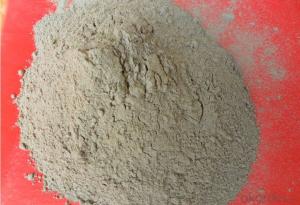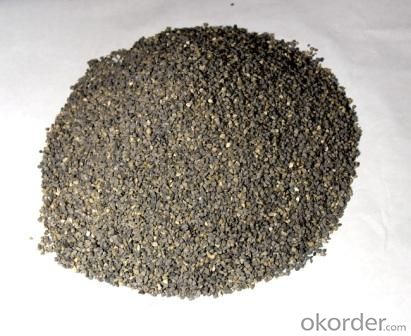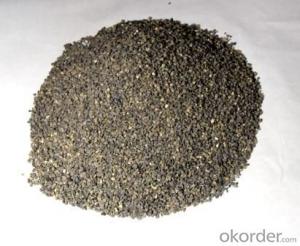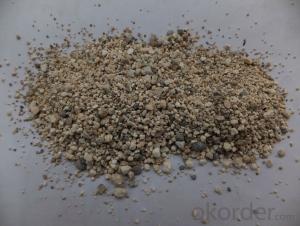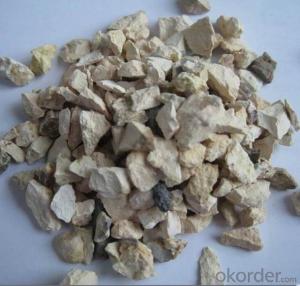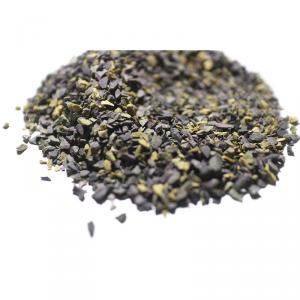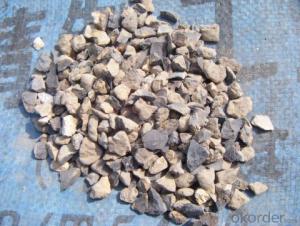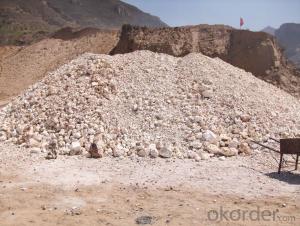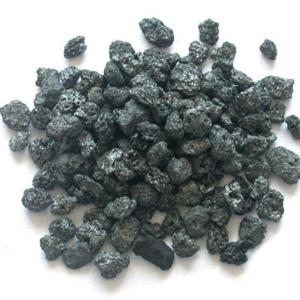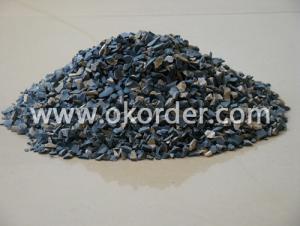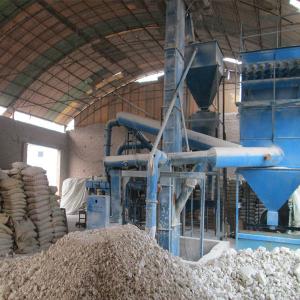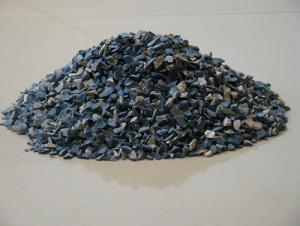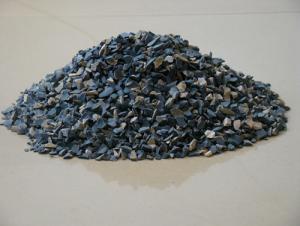Raw Materials for Refractory:Calcined Bauxite Grade Size 1-3mm
- Loading Port:
- China main port
- Payment Terms:
- TT OR LC
- Min Order Qty:
- 25 m.t.
- Supply Capability:
- 10000 m.t./month
OKorder Service Pledge
OKorder Financial Service
You Might Also Like
Quick Details
| Place of Origin: | Henan, China (Mainland) | Shape: | Block, block | Material: | Alumina Block |
| SiO2 Content (%): | <8%< p=""> | Al2O3 Content (%): | 75%-90% | MgO Content (%): | <0.5%< p=""> |
| CaO Content (%): | <0.5%< p=""> | Refractoriness (Degree): | 1770°< Refractoriness< 2000° | CrO Content (%): | 0 |
| SiC Content (%): | 0 | Model Number: | 1-3mm | Brand Name: | cnbm |
| Color: | yellow, black and white | Application: | Refractory | Moisture: | 0.03% max |
| Bulk density: | ≥2.7g/cm3 | Model Number (Grade): | 75,80,85,86,87,88,90 | Sample: | Free sample of bauxite is available |
| Fe2O3: | 3.0% max | TIO2: | 0.4 max | K2O+NA2O: | 0.3 max |
Packaging & Delivery
| Packaging Details: | 25kgs/woven bag with PE liner bag 1000kgs in a big bag |
| Delivery Detail: | 7 days |
refractory grade size 1-3mm calcined bauxite
1. Calcined Bauxite 1-3mm brief introduction:
Calcined bauxite is a mixture of minerals that contain various concentrations of hydrated
aluminum oxides as well as impurities. The primary ore minerals are gibbsite (alumina tri-hydrate), boehmite and diaspore (alumina monohydrates).
2. Different grades calcined Bauxite 1-3mm tech datas:
Grade | AL2O3 | FE2O3 | TIO2 | K2O+Na2O | CaO+MgO | Bulk density |
75 | 75min | ≤3.0 | ≤4.0 | ≤0.3 | ≤0.5 | ≥2.70 |
80 | 80min | ≤3.0 | ≤4.0 | ≤0.3 | ≤0.5 | ≥2.80 |
85 | 85min | ≤2 | ≤4.0 | ≤0.3 | ≤0.5 | ≥3.00 |
86 | 86min | ≤2 | ≤4.0 | ≤0.3 | ≤0.5 | ≥3.10 |
87 | 87min | ≤2 | ≤4.0 | ≤0.3 | ≤0.5 | ≥3.20 |
88 | 88min | ≤1.8 | ≤4.0 | ≤0.25 | ≤0.5 | ≥3.25 |
90 | 90min | ≤1.8 | ≤4.0 | ≤0.25 | ≤0.5 | ≥3.25 |
3. Sizes available:
Grain size : 8-5mm, 5-3mm, 3-1mm, 1-0mm
powder: -320mesh, -280mesh, -240mesh, -200mesh,
-180mesh, -150mesh, -120mesh, -100mesh
320F 200F 280F 240F
200F 80F 150F 100F
4. Calcined Bauxite 1-3mm applications:
Aluminum smelting
Precision casting
Refractory products
Grinding materials
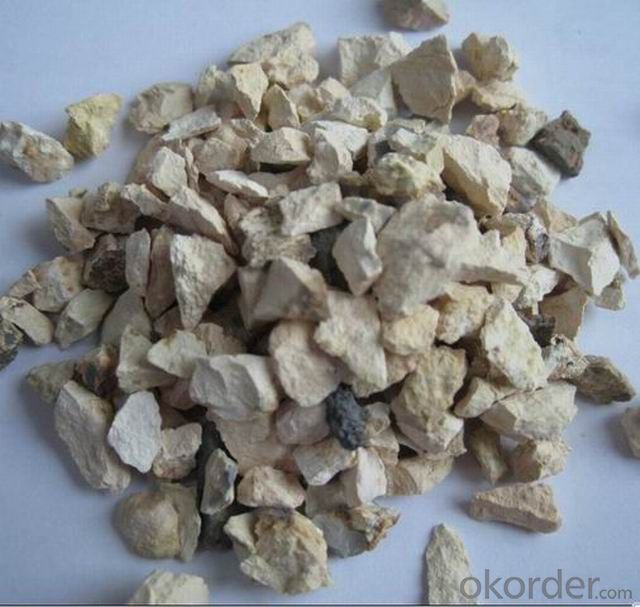
- Q: Technical scheme of refractory for refuse incinerator
- Refractory technical index1. Physical and chemical indexes of graphite brickThe volume density (g/m3 = 1.6)The compressive strength (Mpa = 23)Apparent porosity is less than 21Ash% less than or equal to 0.5The thermal conductivity at room temperature (W/M.K = 45)200 c = 43600 C = 40800 C = 352, N-4 clay brick physical and chemical indexesRefractoriness 1690Load softening temperature of more than 1300 startThe change of reheating line is%1350 DEG C * 2H - 0.5 to +0.2Apparent porosity is less than 24The compressive strength (Mpa = 20)
- Q: Does the production of refractory belong to advanced technology?
- Refractories production is advanced technology supported by the state. The refractory enterprise is high-tech enterprises and it needs to apply for it in science and technology bureau.
- Q: What's the refractory material?
- According to the product shape, it can be divided into two kinds, that is shaped refractory and unshaped refractory. According to the chemical?property, it can be classified into three categories, that is acid refractory, neutral refractory and basic refractory, among which basic refractory and neutral refractory are commonly used, such as the basic refractory of magnesia carbon brick, fired magnesite brick, magnesite-chrome brick, magnesia-calcium brick, and the neutral refractory of high alumina brick, corundum brick, clay brick. Unshaped refractory includes: castable, ramming mass, gunning mix, coating material, dry vibration material, etc.!
- Q: What kind of fireproof material is used for steel structure?
- Fireproof material means the coating is with thickness 3 mm (including 3 mm) or less, good decorative effect, capable of expanding foam, fire endurance of generally within 2 h of steel structure fire at high temperatures. fire-resistant coating for steel structure is generally solvent-based systems, with strong bond strength, water resistance, weatherproof, good flowing property, decorative; it slowly expanded at high temperature to a dense layer of fire insulation, which has a strong refractory shock, delaying the rise of steel, protecting steel components. ultra-thin?intumescent?fireproof coatings?for steel?structure can be used by spraying, brushing or rolling, generally using construction steel with fire endurance within 2 h. new type of ultra-thin fireproof coatings for steel structure has a fire endurance of 2 hours or more, mainly using binding agents of polymethacrylate or epoxy resin and amino?resin and chlorinated?paraffin, which are of special structure, added with fire retardant system such as high degrees of polymerization, phosphoric?acid, dipentaerythritol, adding titanium dioxide, wollastonite and other inorganic refractory materials, solvent oil 200 # solvent composite. All kinds of light steel structure, grid and other use of this type of fire-resistant coating conduct fire protection. As such the fire retardant paint coating is ultra-thin, greatly reducing the amount of thin steel structure fire retardant coating, thereby decreasing the total cost of the project. The steel is protected and the fire is prevented.
- Q: What is the criterion of entry of refractory clay industry?
- There are two requirements: (a) Enterprises mining and processing high-alumina clay meet the national industrial policy, and in line with the requirements of mineral resources planning and industrial planning, industrial development planning of high alumina clay in provinces (autonomous regions and municipalities), urban planning, the whole land use planning, mineral resources planning, environmental protection and pollution prevention planning. (b) The building of new mines of high alumina clay in areas where exploitation of mines are restricted in national and local level should be strictly limited. It is prohibited to build new mines in areas where exploitation of mines is banned, and the mines have been built should be disposed in accordance with the mineral resources planning and relevant national regulations. It is prohibited to build high-alumina clay production and processing enterprises in special conservation areas such as drinking water source reservation areas, natural reservation areas, scenic reservation areas, ecological function reservation areas, basic farmland reservation areas, cities and their suburbs, residence, schools and kindergartens, health center, hospitals and perimeter 1 km from enterprises having high requirements on the environment such as food, medicine, electronics etc., the both banks of main rivers and roads, somewhere near trunk railways.
- Q: Which fire-resistant materials have good viscidity?
- The viscidity of fire-resistant materials is also known as the binding performance of fire-resistant materials. It can be divided into chamotte and chemical binder. Both can work at normal or high temperature. The most commonly used chamotte are soft clay and aluminate cement. The commonly used chemical binders include sodium silicate, phosphoric acid, aluminum sulphate, aluminium phosphate, phenolic resin, etc. Fire resistant material is a complicated and overloaded system and we cannot know its materials and chemical components from the name alone. Both gunning mix and repair mix contain binder components. If they can used after adding water, then they may contain clay or fire resistan aluminum silicate cement.
- Q: How is refractory material made?
- It is made from polyester.
- Q: What is high alumina refractory?
- High alumina refractory: High alumina refractory products, with high refractoriness, compressive strength and refractoriness under load, it is used for masonry of a variety of large-scale blast furnaces such as steel furnace, air heating furnace and electric furnace, and for high-temperature parts of thermal equipment like rotary?kilns.
- Q: What needs to be paid attention to in the construction of high- temperature refractory mortar?
- In the construction of high-temperature refractory mortar, the following matters should be noted: 1. Take out the organic fire blocking material and knead it into tha shape of a ball. If the temperature is too low, the blocking material along with the package can be put into 40-70℃ warm water and heated before any other operation. 2. During the use of high-temperature daub masonry stove, the minimum mortar joint should be 0.5mm and general mortar joint should be 3-5mm, which can solve the processing and fine grinding of refractory brick on the brick grinder. Besides, it is conducive to the health of workers, and can reduce the masonry effort, ensure the quality and speed up the construction progress. 3. When making urgent repair on the stove, if the joint is much too large, 2-3mm refractory pieces can be appropriately added into the high- temperature refractory mortar, and stirred to fill the joint so as to shorten the repair time and ensure normal production. 4. High- temperature refractory mortar can be painted inside various furnace body, and it should be guaranteed that the surface of the furnace body has no dust or debris before painting. The holes should be cleaned up before plugging. Lay, embed, and fill the blocking material into the gap of holes evenly. For larger holes, flame screen can be used as the framework to increase strength.
- Q: What are the main materials in concrete fireproofing material?
- it can be roughly divided into: fire-resistant coating for steel structure, finishing fire retardant paint, tunnel fire coatings, concrete fire?retardant?coating, cable refractory coating. fire-resistant coating for steel structure is divided into: Indoor ultra-thin fireproof coatings for steel structure, indoor thin steel structure fireproofing coating, indoor thick steel structure fireproofing coating, outdoor ultra-thin fireproof coatings for steel structure, Outdoor thin steel structure fireproofing coating, outdoor thick steel fireproofing coating. I hope it can help you. Hope to adopt my opinion Thank you! )
Send your message to us
Raw Materials for Refractory:Calcined Bauxite Grade Size 1-3mm
- Loading Port:
- China main port
- Payment Terms:
- TT OR LC
- Min Order Qty:
- 25 m.t.
- Supply Capability:
- 10000 m.t./month
OKorder Service Pledge
OKorder Financial Service
Similar products
Hot products
Hot Searches
Related keywords
